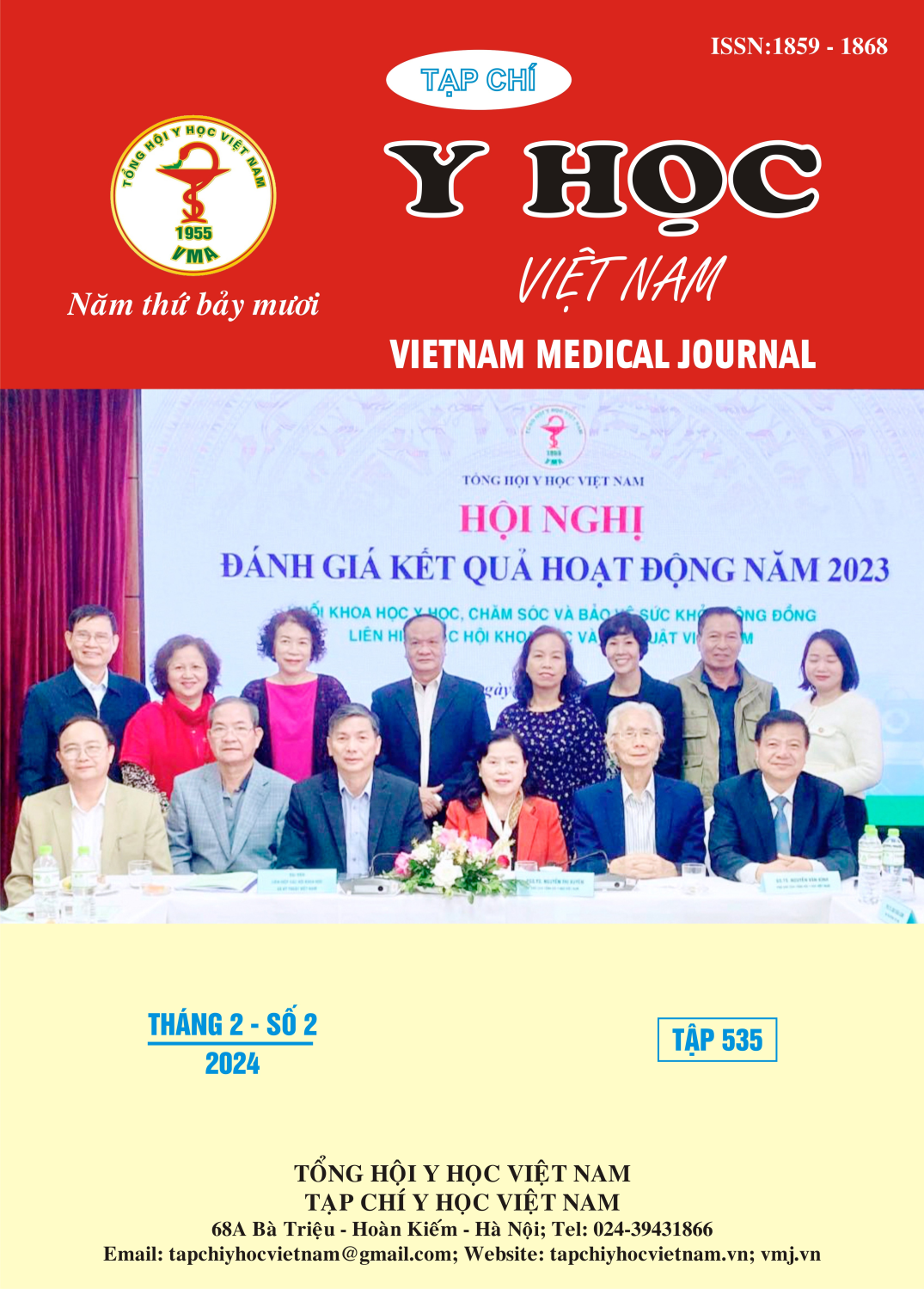EARLY RESULTS OF LAPAROSCOPIC COLORECTAL RESECTION SURGERY USING PURSESTRING SUTURE PLACEMENT ON THE RECTAL STUMP: A RETROSPECTIVE STUDY
Main Article Content
Abstract
Objectives: Anastomotic leakage is a serious complication in colorectal resection surgery for rectal cancer treatment. Many studies have shown that leakage reduces the effectiveness of treatment and leave many serious sequelae for patients. Although there have been many improvements in surgical techniques, equipment and stapling devices, the leakage rate is still quite high at 6 – 11%. Many surgeons belives that the “dog ears” in two-stapler method contribute to the risk of anastomotic leakage complications, and they recommend implementing the pursestring suture placement method on the rectal stump. Several international studies have reported a decreased rate of anastomotic leakage. In Vietnam, there is currently limited research on the method of pursestring suture placement on the rectal stump. Methods: A retrospective study of laparoscopic anterior resection and laparoscopic low anterior resection with a single-stapler anastomosis and the placement of two pursestring sutures on the rectal stump for the treatment of rectal cancer. Results: 38 patients underwent laparoscopic colorectal resction with a single-stapler anastomosis and the placement of two pursestring sutures on the rectal stump, with an average age of 64,87 ± 11,44 years, men have the disease more often than women (60,5%). 16 patients (42,1%) with high rectal cancer underwent laparoscopic anterior resection, 12 patients (31,6%) with middle rectal cancer and 10 patients (26,3%) with low rectal cancer underwent laparoscopic low anterior resection. The average operative time were 214,4 ± 44,2 minutes and 250,0 ± 48,6 minutes respectively, the average blood loss was 126,58 ± 52,72 ml, 0 patients requiring blood transfusion. There were no complications during surgery. Postoperative complications, such as anastomotic leakage, intra-andominal abscesses, vaginal rectal fistula, and bleeding occurred in 0% of case and there were no patient deaths. Conclusion: The method of pursestring suture placement on the rectal stump during laparoscopic colorectal resection for cancer treatment results safety and effectiveness when performed in specialized medical centers.
Article Details
Keywords
Colorectal cancer, Anterior resection, Low anterior resection, A pursestring suture
References
2. Nguyễn Hoàng Bắc, Nguyễn Hữu Thịnh, Nguyễn Quốc Thái. Tai biến và biến chứng phẫu thuật nội soi cắt nối máy điều trị ung thư trực tràng. Y học TP Hồ Chí Minh. 2010;14:119-123.
3. Bùi Chí Viết. Vai trò của máy khâu nối vòng trong phẫu thuật ung thư trực tràng có bảo tồn cơ thắt. Y học TP Hồ Chí Minh. 2010;15(4)
4. Holtedahl K, Borgquist L, Donker GA, et al. Symptoms and signs of colorectal cancer, with differences between proximal and distal colon cancer: a prospective cohort study of diagnostic accuracy in primary care. BMC family practice. Jul 8 2021;22(1):148. doi:10.1186/s12875-021-01452-6
5. Ganapathi SK, Subbiah R, Rudramurthy S, Kakkilaya H, Ramakrishnan P, Chinnusamy P. Laparoscopic anterior resection: Analysis of technique over 1000 cases. Journal of minimal access surgery. Jul-Sep 2021;17(3):356-362. doi:10.4103/jmas.JMAS_132_20
6. Ng SS, Leung KL, Lee JF, et al. Laparoscopic-assisted versus open abdominoperineal resection for low rectal cancer: a prospective randomized trial. Annals of surgical oncology. Sep 2008; 15(9):2418-25. doi:10.1245/s10434-008-9895-0
7. Braga M, Frasson M, Vignali A, Zuliani W, Capretti G, Di Carlo V. Laparoscopic resection in rectal cancer patients: outcome and cost-benefit analysis. Diseases of the colon and rectum. Apr 2007;50(4):464-71. doi:10.1007/ s10350-006-0798-5
8. Brunner M, Zu’bi A, Weber K, et al. The use of single-stapling techniques reduces anastomotic complications in minimal-invasive rectal surgery. 2022;37(7):1601-1609.
9. Kang S-B, Park JW, Jeong S-Y, et al. Open versus laparoscopic surgery for mid or low rectal cancer after neoadjuvant chemoradiotherapy (COREAN trial): short-term outcomes of an open-label randomised controlled trial. 2010;11(7):637-645.
10. Lujan J, Valero G, Hernandez Q, Sanchez A, Frutos M, Parrilla PJJoBS. Randomized clinical trial comparing laparoscopic and open surgery in patients with rectal cancer. 2009;96(9):982-989.


